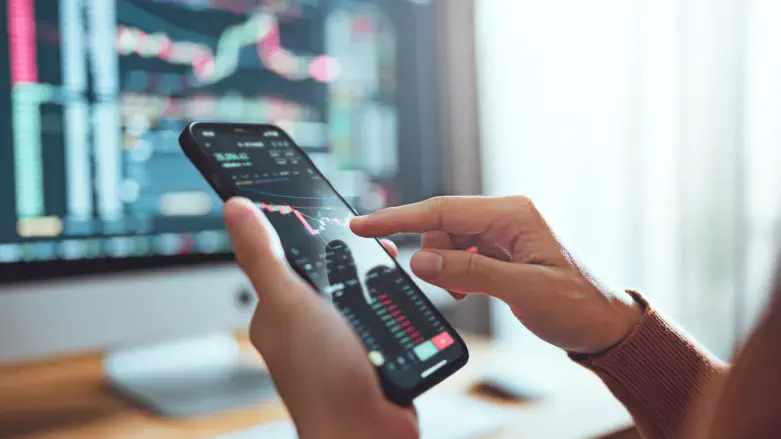
Venturing into the world of crypto trading has been an exhilarating journey for me, filled with both challenges and rewarding discoveries. One of the most fascinating aspects I've encountered is the diverse range of trading models available. These models, grounded in data and strategy, offer a structured approach to navigating the often volatile crypto market.
From algorithmic trading to machine learning models, each approach provides unique insights and opportunities. I've found that understanding and implementing these models not only enhances trading efficiency but also boosts confidence in decision-making. As the crypto landscape continues to evolve, embracing these innovative models can be a game-changer for anyone looking to maximize their trading potential.
Key Takeaways
- Diverse Trading Models: Crypto trading models, such as algorithmic and machine learning models, provide structured approaches to managing the volatile cryptocurrency market, boosting both trading efficiency and decision-making confidence.
- Types of Models: Key crypto trading models include trend following, mean reversion, and arbitrage, each offering unique strategies for capitalizing on market movements and opportunities.
- Automated Trading Benefits: Automated trading models enhance efficiency by reducing errors, executing trades swiftly, and maintaining strategy consistency, thereby minimizing emotional biases.
- Performance Analysis: Evaluating trading models involves using metrics like accuracy, average trading profit, and the Sharpe ratio to ensure robust performance while addressing challenges like data quality and market volatility.
- Adaptation to Market Changes: Successful trading requires adapting models to emerging trends and volatility, using strategies such as trend monitoring and risk management through diversification and stop-loss orders.
- Risks and Mitigations: Navigating crypto trading involves understanding the risks of volatility and scams, utilizing stop-loss orders, diversification, and maintaining awareness to mitigate potential pitfalls.
Understanding Crypto Trading Models
Crypto trading models act as vital guides for decision-making in the volatile cryptocurrency market. I find these models essential for navigating trading's complex landscape.
Exploring the Basics
I categorize crypto trading strategies into three main types: technical, fundamental, and programmatic. Technical trading draws on past price data and indicators, defining 66% of the research sphere. Fundamental trading looks at market fundamentals like cryptocurrency demand and supply. Meanwhile, programmatic trading involves automated systems for real-time execution. These strategies can optimize trading results.
The Importance of Trading Models in Cryptocurrency
Trading models help improve my decision-making and minimize risks. They equip me with analytical tools to understand market trends. By using these models, I can simplify complex data into actionable insights. They're especially crucial with cryptocurrencies' unpredictable nature. I value their role in providing structure and precision, enhancing my trading efficiency.
Types of Crypto Trading Models
Exploring crypto trading models expanded my trading toolbox. Each model offers unique strategies that can enhance trading efficiency. Here, I'll dive into three core models: trend following, mean reversion, and arbitrage.
Trend Following Models
Trend following models became my go-to when I sought to ride long-term market movements. They aim to capitalize on the direction of market trends. Using tools like moving averages and RSI helped me confirm these trends confidently. I found that risk management, through stop-loss orders, reduced uncertainties remarkably. This made trading feel less like a gamble and more like a science.
Mean Reversion Models
Mean reversion models fascinated me with their focus on price corrections. They assume that prices will revert to an average value. This approach opened my eyes to opportunities when prices seemed overextended. By analyzing price deviations, I predicted rebounds effectively. Incorporating these models into my strategy allowed me to optimize entry and exit points, creating a smooth trading experience.
Arbitrage Models
Arbitrage models seemed complex at first but proved rewarding. They involve exploiting price differences across markets. I discovered opportunities in price discrepancies between exchanges. This required swift execution due to the quick nature of these gaps. Engaging with arbitrage gave me firsthand insight into market inefficiencies and fine-tuning my skills in real time.
Implementing Automated Trading Models
Automated trading models have transformed how I approach crypto markets. These models enhance my trading by enabling efficiency in execution and decision-making.
Benefits of Automation
Automation reduces errors in trading decisions. Machines execute trades faster than I could, ensuring I don't miss opportunities. Consistency is another advantage, as automated systems stick to predefined strategies, removing emotional biases. This leads to better accuracy and potential profits. It saves me time by handling multiple markets simultaneously, allowing me to focus on strategy refinement.
Selecting the Right Software
Choosing the right software is crucial for success. I prioritize platforms offering integration with exchanges, reliable performance, and security features. Good software has customizable settings, allowing me to tailor strategies to my preferences. I also seek community support and frequent updates, ensuring the system evolves with market changes. User-friendly interfaces make it easier to monitor and modify my trading models without hassle.
Analyzing the Performance of Trading Models
Evaluating trading models offers insights into their effectiveness in navigating crypto markets. By measuring performance, I can fine-tune strategies for better outcomes.
Key Metrics for Evaluation
Accuracy is vital. I typically use metrics like precision and recall to gauge model performance. For crypto price prediction, a high accuracy rate, like the CNN–LSTM's 82.44%, shows reliability in forecasts. I also consider average trading profit and Sharpe ratio to assess risk-adjusted returns. Monitoring these metrics ensures that my models remain robust under various market conditions. Consistency in these results over time provides a solid foundation for trusting a model's predictions.
Common Challenges in Performance Analysis
Data quality poses challenges. Incomplete or biased data can skew results, making it hard to trust predictions. I find model complexity adds another layer, as sophisticated models, despite higher accuracy, require more computational resources and can overfit training data. Additionally, market volatility impacts performance, as rapid changes in crypto markets make it tough to maintain model accuracy consistently. Balancing these elements while evaluating helps me refine strategies and improves trading confidence.
Adapting Models for Market Changes
Navigating the unpredictable landscape of crypto trading requires constant adaptation to market changes. My strategies hinge on an understanding of emerging trends and fluctuations.
Keeping Up with Trends
Identifying new crypto trends boosts my trading success. I follow market forums, news outlets, and influencers to stay updated. These sources provide insights into innovative projects and technology shifts. I also monitor social media channels for community sentiment. Tracking these trends helps me anticipate future movements, allowing me to react swiftly in the dynamic market. This practice keeps my strategies aligned with the ever-evolving crypto scene.
Adjusting for Volatility
Dealing with crypto volatility is crucial for traders. I employ stop-loss orders to protect my investments during sudden price changes. By setting limits, I can minimize potential losses effectively. I analyze volatility patterns to predict market swings and adjust my trading models accordingly. Diversification also plays a role, spreading risks across various cryptocurrencies. This adaptive approach enhances my resilience against market turbulence, ensuring smoother trading experiences despite volatility.
Risks and Limitations of Crypto Trading Models
Crypto trading models have transformed the way I approach the market. However, understanding their risks is crucial. These models offer numerous benefits but come with inherent pitfalls.
Identifying Potential Pitfalls
Volatility is a major concern, with prices swinging significantly. This unpredictability poses challenges for accurate predictions. Liquidity problems arise when trading low-volume cryptocurrencies. Scams are another risk; I must remain vigilant to avoid fraudulent schemes and phishing attempts. Unregulated markets increase vulnerability to these threats.
Mitigating Common Risks
I address volatility by using stop-loss orders to limit losses and use diversification to help manage risk by spreading investments. Staying informed about market trends provides insights to avoid pitfalls, and trustworthy exchanges and secure wallets protect me from potential scams. Awareness and strategy are key to navigating crypto trading safely.
Conclusion
Crypto trading models have undoubtedly reshaped my trading journey offering a structured approach to the unpredictable crypto markets. Embracing these models has not only enhanced my decision-making but also provided me with the tools to navigate market complexities with greater confidence. The integration of automation and continuous adaptation to market trends ensures that I'm well-equipped to handle the dynamic nature of cryptocurrencies. While the risks are inherent understanding and leveraging these models allows for more informed and strategic trading. By staying informed and employing robust strategies, I aim to continue maximizing my trading potential in this ever-evolving landscape.
